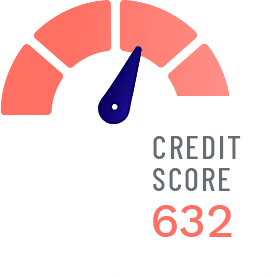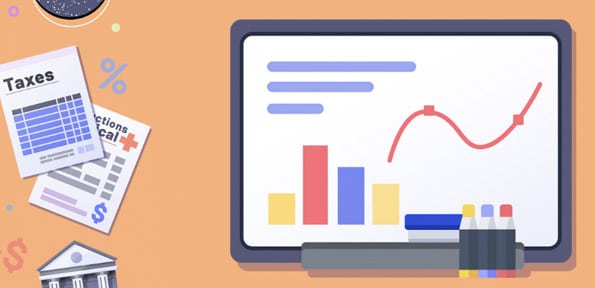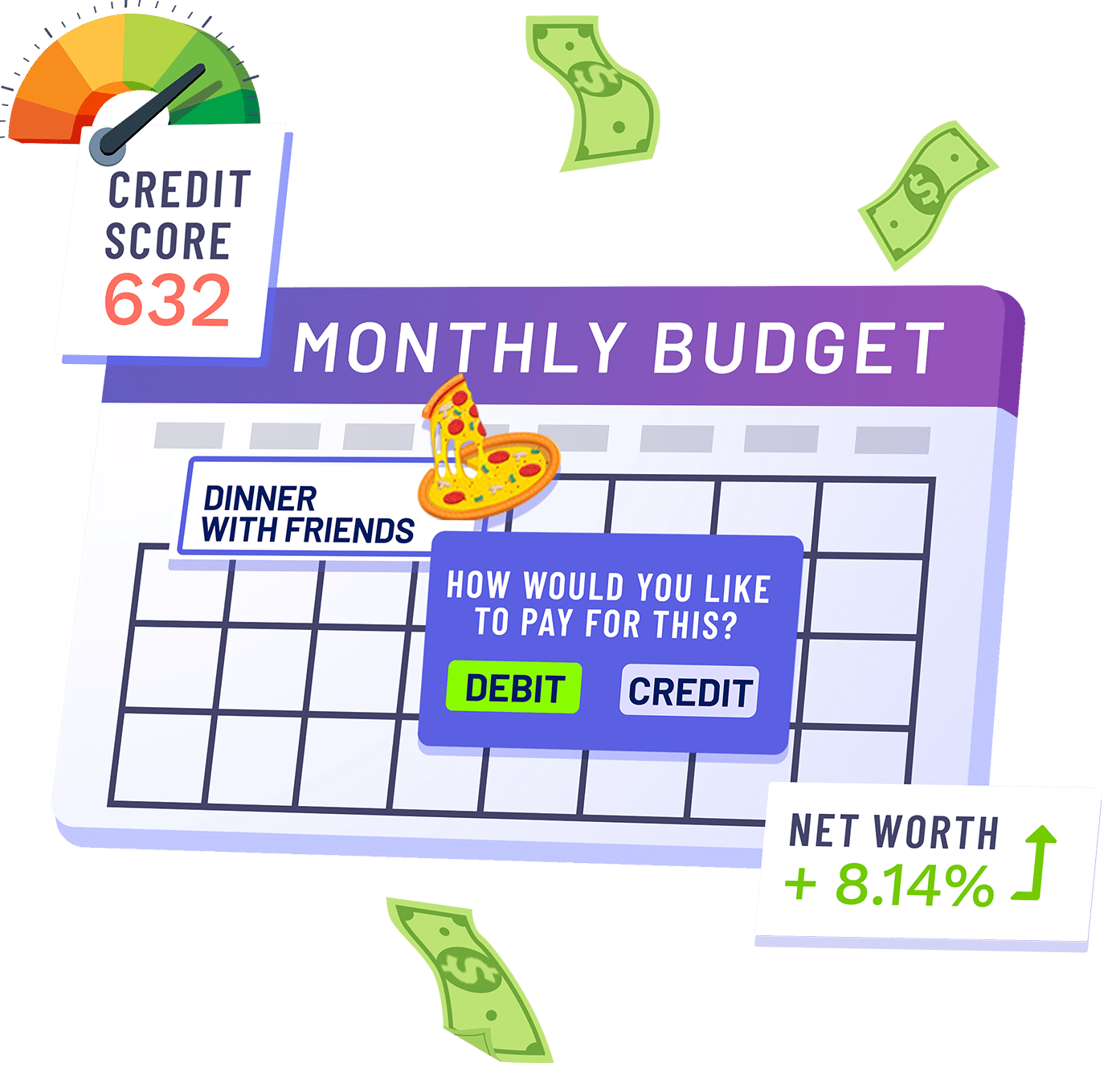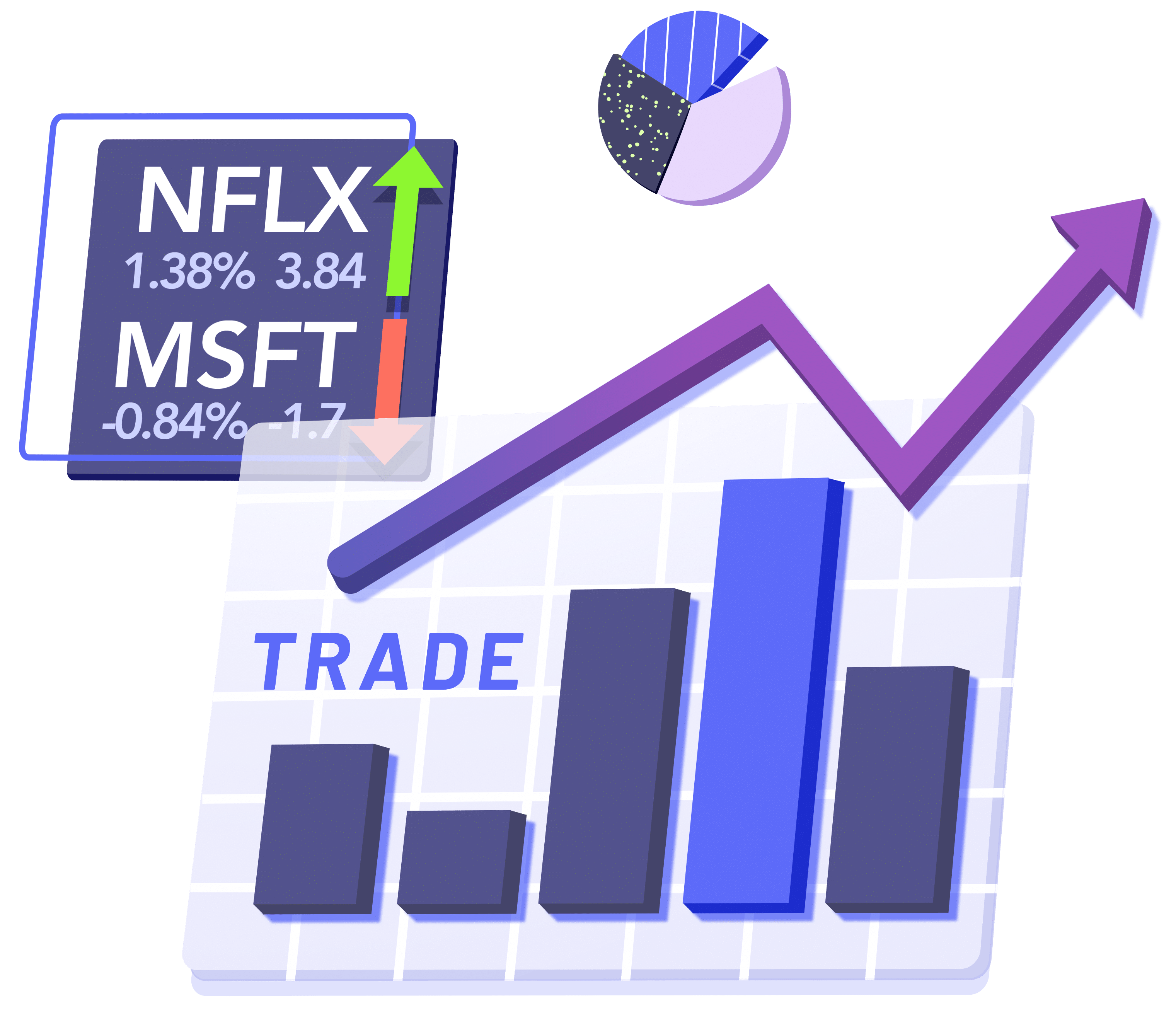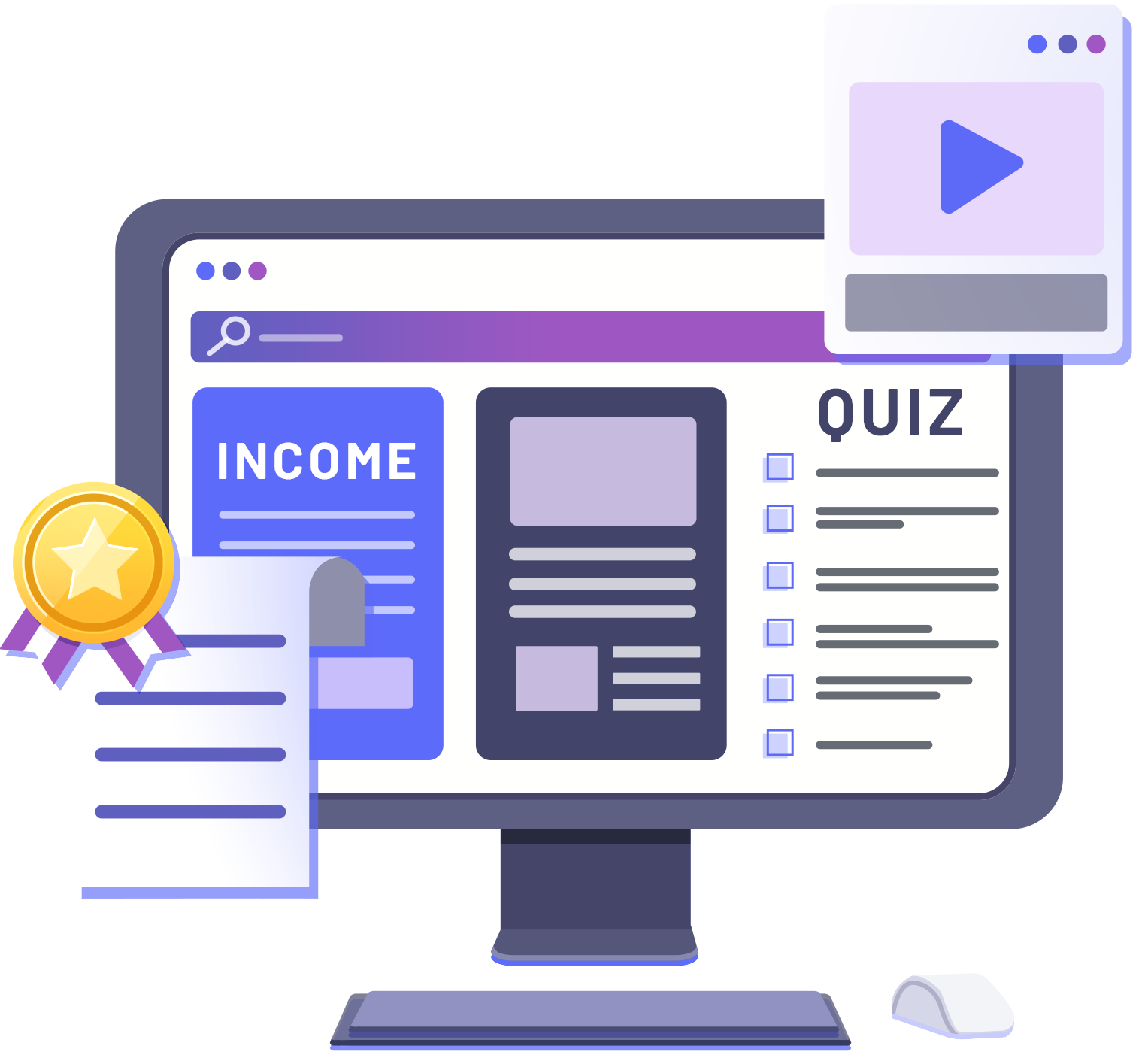|
| Fundamentals of Economics | | | | | | |
| Analyze how the concepts of scarcity, choice, and opportunity costs apply to decision-making. | Lesson – Why is there Scarcity?
Lesson – What is Opportunity Cost? | | | | | |
| Interpret a production-possibilities curve and apply the concepts of scarcity, choice, and opportunity costs. | Lesson – Why is there Scarcity?
Lesson – What is Opportunity Cost? | | | | | |
| Explain how the production-possibilities curve represents cost-benefit decision-making. | Lesson – Marginal Benefit and Cost | | | | | |
| Use the circular flow model to identify how households, firms, and governments interact in both resource markets and product markets. | Lesson – The Business Cycle | | | | | |
| Evaluate how prices and quantities are determined through supply and demand. | Lesson – Supply and Demand Examples in the Stock Market | | | | | |
| Interpret a supply-and-demand graph, including equilibrium point, surpluses, and shortages. | Lesson – Supply and Demand Examples in the Stock Market | | | | | |
| Analyze how non-price determinants of supply and demand affect equilibrium price and equilibrium quantity. | Lesson – Supply and Demand Examples in the Stock Market | | | | | |
| Explain how supply and demand exist in both resource and product markets. | Lesson – Supply and Demand Examples in the Stock Market | | | | | |
| Macroeconomics |
Activity |
Long-Term Game |
Comprehensive Chapter |
Short Lesson |
Interactive Calculator |
Graded Assessment |
| Identify types of progressive and regressive taxes at the local, state, and national levels and explain the economic importance of each. | Lesson – Taxation Overview | | | | | |
| Examine and evaluate the reasons for federal income taxation, Social Security taxation, Medicaid taxation, and Medicare taxation, including earnings limitations as applicable. | Lesson – Taxation Overview
Lesson – Tax Filing and the Form 1040
Lesson – Common Tax Deductions | | | | | |
| Explain how all economic systems are mixed and exist on a spectrum between pure market and pure command systems. | Lesson – Comparative Economic Systems – Capitalism, Socialism, and Communism | | | | | |
| Explain the benefits of the U.S. free enterprise system, including private property and incentives. | Lesson – Property Rights | | | | | |
| Discuss the importance of full employment, price stability, and economic growth in achieving the macroeconomic goals of the United States. | Lesson – Unemployment and other programs | | | | | |
| Explain the impact of fiscal policies enacted by government decisions on interest rates, inflation, and unemployment. | Lesson – Inflation
Lesson – Importance of Interest Rates
Lesson – Unemployment and other programs | | | | | |
| Explain the impact of monetary policies enacted by the Federal Reserve System on interest rates, inflation, and unemployment. | Lesson – Government impact on the economy
Lesson – Unemployment and other programs | | | | | |
| Personal Financial Literacy – Investing in Education and Skills |
Activity |
Long-Term Game |
Comprehensive Chapter |
Short Lesson |
Interactive Calculator |
Graded Assessment |
| Analyze the relationship between education and training and earnings throughout the student’s lifetime. | Lesson – Career Development | | | | | |
| Investigate and evaluate the costs and benefits of various postsecondary education and training institutions. | Lesson – Student Loans | | | | | |
| Describe the process for completing grant and scholarship applications, including the Free Application for Federal Student Aid (FAFSA®) provided by the U.S. Department of Education or the Texas Application for State Financial Aid (TASFA). | Lesson – Student Loans
Lesson – Work VS Study | | | | | |
| Analyze and compare various student grant and loan options, including private and federal loans. | Lesson – Student Loans | | | | | |
| Interpret data from a student aid report. | Lesson – Student Loans | | | | | |
| Research and align personal interests and skills with potential careers and postsecondary education to assure a life strategy that will produce employment the student enjoys with a desired standard of living. | Lesson – Career Development | | | | | |
| Personal Financial Literacy – Earning |
Activity |
Long-Term Game |
Comprehensive Chapter |
Short Lesson |
Interactive Calculator |
Graded Assessment |
| Identify sources of income, including wages and salaries, profits, interest, rent, dividends, and capital gains. | Budget Game – Core Concept
Lesson – Income and Compensation | | | | | |
| Compare common employee benefits such as health insurance, sick leave, retirement plans, and other tax-favored health and dependent care plans. | Lesson – Employer and Employee Rights and Responsibilities | | | | | |
| Differentiate among and calculate gross, net, and taxable income. | Lesson – Taxation Overview
Lesson – Tax Filing and the Form 1040 | | | | | |
| Identify factors such as educational attainment and market demand for careers that can influence the labor market and affect income. | Lesson – Labor and Productivity | | | | | |
| Personal Financial Literacy – Entrepreneurship |
Activity |
Long-Term Game |
Comprehensive Chapter |
Short Lesson |
Interactive Calculator |
Graded Assessment |
| Describe the role of the entrepreneur in creating businesses. | Lesson – What is Entrepreneurship?
Lesson – Types of Companies | | | | | |
| Explain how an entrepreneur earns income, including through profits from the creation or ownership of businesses. | Lesson – What is Entrepreneurship? | | | | | |
| Compare total compensation, additional benefits, and obligations as a self-employed or independent contractor and as an employee. | Lesson – Starting a Business
Lesson – What is Entrepreneurship? | | | | | |
| Discuss the resources available for entrepreneurship and the federal, state, and local agencies available to assist with or provide grants for the creation of a small business. | Lesson – Starting a Business
Lesson – What is Entrepreneurship? | | | | | |
| Analyze the risks and rewards of entrepreneurship, including those associated with starting a new business, owning a small business, and purchasing a franchise. | Lesson – Risk | | | | | |
| Explain the characteristics of business organizations such as sole proprietorships, partnerships, and corporations. | Lesson – Types of Companies
Lesson – Forms of Business Ownership | | | | | |
| Personal Financial Literacy – Spending |
Activity |
Long-Term Game |
Comprehensive Chapter |
Short Lesson |
Interactive Calculator |
Graded Assessment |
| Develop financial goals for the short, medium, and long term that are specific, measurable, attainable, realistic, and time based. | Budget Game – Core Concept
Lesson – Planning Long-Term Purchases | | | | | |
| Analyze the opportunity costs of spending and saving in recognizing short-, medium-, and long-term goals. | Lesson – Planning Long-Term Purchases | | | | | |
| Identify and prioritize types of purchases and charitable giving. | Budget Game – Core Concept
Lesson – Charitable Giving | | | | | |
| Evaluate various forms of financial exchange such as cash, checks, credit cards, debit cards, mobile payment applications, and electronic transfers. | Lesson – What is Money? | | | | | |
| Discuss the importance of tracking income and expenses to reconcile financial records. | Lesson – Financial Records and Receipts
Lesson – Reconciling accounts
Lesson – What are Financial Records? | | | | | |
| Evaluate the impact of unplanned spending. | Budget Game – Core Concept | | | | | |
| Analyze costs and benefits of owning versus renting housing. | Activity – Use the Home Budgeting Calculator
Activity – Use the Buy vs Lease Calculator
Lesson – Mortgages | | | | | |
| Analyze costs and benefits of owning versus leasing a vehicle. | Activity – Use the Car Loans Calculator | | | | | |
| Personal Financial Literacy – Credit and Debt |
Activity |
Long-Term Game |
Comprehensive Chapter |
Short Lesson |
Interactive Calculator |
Graded Assessment |
| Compare and contrast sources of credit such as banks, merchants, peer-to-peer, payday loans, and title loans. | Budget Game – Core Concept
Lesson – Short-Term Financing
Lesson – Good Debt, Bad Debt | | | | | |
| Identify the characteristics and dangers of predatory lending practices. | Lesson – Short-Term Financing
Lesson – Good Debt, Bad Debt | | | | | |
| Compare and contrast types of credit, including revolving and installment credit, and collateralized loans versus unsecured credit. | Budget Game – Core Concept
Lesson – Using Credit
Lesson – Credit Cards
Lesson – Managing Debt | | | | | |
| Discuss how character, capacity, and collateral can adversely or positively impact an individual’s credit rating and ability to obtain credit. | Budget Game – Core Concept
Lesson – Credit Reports
Lesson – Using Credit | | | | | |
| Explain how to access a credit report and score and interpret a sample credit report and score. | Budget Game – Core Concept
Lesson – Credit Reports | | | | | |
| Describe the importance of monitoring credit reports regularly and addressing errors. | Lesson – Credit Reports | | | | | |
| Discuss how personal factors such as medical expenses, job loss, divorce, or a failed business could lead to bankruptcy. | Lesson – Bankruptcy | | | | | |
| Determine and discuss if and when to use credit by considering the truth in lending disclosures. | Budget Game – Core Concept
Lesson – Using Credit
Lesson – Good Debt, Bad Debt | | | | | |
| Personal Financial Literacy – Saving and Investing |
Activity |
Long-Term Game |
Comprehensive Chapter |
Short Lesson |
Interactive Calculator |
Graded Assessment |
| Determine the exponential growth benefits of starting early to invest with continuous contributions. | Stock Game – Core Concept
Activity – Use the Investment Return Calculator | | | | | |
| Determine the number of years it will take for savings to double in value by using the rule of 72. | Activity – Use the Compound Interest Calculator
Lesson – Importance of Interest Rates | | | | | |
| Evaluate the costs and benefits of various savings options such as bank savings accounts, certificates of deposit, and money market mutual funds. | Stock Game – Core Concept | | | | | |
| Evaluate risk and return of various investment options, including stocks, bonds, mutual funds, and exchange�traded funds (ETFs). | Stock Game – Core Concept | | | | | |
| Evaluate the relative benefits of pre-tax and post-tax investing. | Budget Game – Core Concept | | | | | |
| Develop a short-term saving strategy to achieve a goal such as establishing and maintaining an emergency fund. | Budget Game – Core Concept
Lesson – Pay Yourself First | | | | | |
| Develop an intermediate-term saving and investing strategy to achieve a goal such as accumulating a down payment on a home or vehicle. | Lesson – Planning Long-Term Purchases | | | | | |
| Develop a long-term investing strategy to achieve a goal such as a financially secure retirement. | Lesson – Preparing For Retirement | | | | | |
| Personal Financial Literacy – Protecting and Insuring |
Activity |
Long-Term Game |
Comprehensive Chapter |
Short Lesson |
Interactive Calculator |
Graded Assessment |
| Apply risk management strategies, including avoiding, reducing, retaining, and transferring risk. | Lesson – Risk
Lesson – Homeowner’s Insurance | | | | | |
| Define insurance terminology, including premiums, deductibles, co-pays, and policy limits. | Lesson – Health Insurance
Lesson – Life Insurance | | | | | |
| Explain the costs and benefits of different types and sources of health insurance. | Lesson – Health Insurance | | | | | |
| Explain the costs and benefits of disability and long-term care insurance. | Lesson – Life Insurance | | | | | |
| Explain the costs and benefits of life insurance, including term insurance and whole life insurance. | Lesson – Life Insurance | | | | | |
| Explain the costs and benefits of property insurance, including homeowner’s and renter’s insurance. | Lesson – Renter’s Insurance
Lesson – Home Owner’s Insurance
Lesson – Rental Agreements and Homeowner’s Associations | | | | | |
| Explain the costs and benefits of automobile insurance and factors that impact the price of insurance, including the type of vehicle, age and sex of driver, driving record, deductible, and geographic location. | Lesson – Car Insurance | | | | | |
| Identify ways to reduce risk of identity theft and protect personal information | Lesson – Protecting Against Fraud | | | | | |
| Describe and identify examples of common financial schemes and scams such as Ponzi schemes and pyramid, phishing, check cashing, and home renovation scams. | Lesson – Protecting Against Fraud
Lesson – What makes a contract valid? | | | | | |
| Explain how consumer protection agencies protect consumers against fraud. | Lesson – Consumer rights and responsibilities | | | | | |
| Explain the importance of estate planning, including guardianship of minor children, wills, beneficiary designation, power of attorney, living will, and medical directives. | Lesson – Simple and Living Wills | | | | | |
| Personal Financial Literacy – Skills |
Activity |
Long-Term Game |
Comprehensive Chapter |
Short Lesson |
Interactive Calculator |
Graded Assessment |
| Use problem-solving and decision-making processes to identify a problem, gather information, list and consider options, consider advantages and disadvantages, choose and implement a solution, and evaluate the effectiveness of the solution. | Lesson – Pay Yourself First
Lesson – Importance of Planning and Vision | | | | | |
| Develop a budget that addresses short-, medium-, and long-term financial goals. | Budget Game – Core Concept
Lesson – Pay Yourself First
Lesson – Planning Long-Term Purchases | | | | | |
| Explain why earning income, spending, credit, debt, saving and investing, and protecting and insuring assets are important parts of a comprehensive financial plan and develop a plan that incorporates these components. | Budget Game – Core Concept
Lesson – Budgeting and Spending Strategies
Lesson – Investing Strategies
Lesson – Building Wealth
Lesson – Preparing for Retirement | | | | | |


